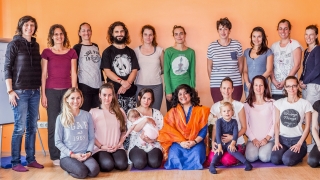Health is surely not a goal that we might attain one day. It is moment-to-moment transformation in a three-step process:
1) Letting go of what does not serves any more
2) Allowing the absorption of all that provides energy
3) Transformation of the energy into nourishment
We are being sold the concept of health through vitamins, supplements - in all forms of short cuts. None of these can promise health, these are temporary fixes and we are so used to them.Health is choice that we make every moment by living mindfully. Mindful living allows space between action, response and interaction, it is not a robotic lifestyle.
The concept of having a routine is definitely not a new one but one which needs revival. Ayurveda lays emphasis on prevention more then cure. If what we do on everyday basis takes care of the three-step process then health becomes a consequence of such a routine.
In Ayurveda the suggested routine changes as per solar cycle (6 am to 6 pm), lunar cycle (6 pm to 6 am) and seasonal cycle (6 seasons, every 2 months) and is called dinacharya, ratricharya and ritucharya - respectively.
Solar and lunar cycles are divided into three dosha phases of 4 hours each. Kapha phase from 6 am to 10am, Pitta phase from 10 am to 2 pm and Vata phase from 2 pm to 6 pm. Between these two cycles, the most important is following the solar cycle (dinacharya) and in dinacharya the most important is the kapha phase. It (kapha phase) is the time of the day when the immunity is the strongest, it is the time for nourishment and time for cleansing, it is the time to stroke the gastric fire (jathar agni) and awaken healthy appetite.
One must follow this 10-step routine:
1. Atma Tattvavalokanam: Wake up with awareness of your breath and consciousness before sunrise
2. Sankalpa: Create a firm resolve to know your dharma, to strengthen your dharmic path, or to work on deep seated conditionings and samskaras
3. Usha Paana: Soak water in a good quality copper pot *overnight and drink about 6-8 oz of this solar and lunar energy charged water. It helps in activating the peristaltic movement for healthier evacuation, rinsing the internal organs like kidney, pancreas and liver.
* If you have excess copper in your body or allergic to copper: Soak the water in terra-cotta water bottle and drink that water next morning.
4. Shat Kriya: practice agnisaar and/or nauli to activate the digestive fire and build sama agni. (Avoid this practice in case of mensuration, pregnancy, high fever or high inflammatory conditions. Instead one may practice nadi shodhan.)
5. Asanas/ apana kriyas: Practice Surya Namaskar to warm up the whole body, awaken the tissues, open up the channels, lubricate the joints. Instead of surya namaskaar one may also choose to practice dosha specific, condition specific, season specific practices. The most important aspect is including the five movements in the physical practice: stretching/contraction, lateral stretch, twist, forward fold and back bend, inversion.
6. Pancha Indriya Shodhan: Sensory cleanse
- Eyes: Rinse the eyes with tap cold water or instill few drops of distilled rose water
- Ears: Instill 1 drop of cold pressed mustard oil, simply massaging the external ear and the ear opening with ring finger
- Nose: Practice jala neti two to three times a week using copper neti pot by soaking distilled water in copper pot overnight, warming the ionized water in the morning and adding Himalayan pink salt to it. (The quantity of salt can vary based on your body's response.) Practice kapalbhatti after neti to release any trapped water molecules from the sinuses.
- Mouth: Scrape the tongue using a copper (for kapha and vata) or steel (for pitta) tongue scrapper. Use it 3-5 times until the scrapper comes out clean and all the build up is removed. Use it daily and follow with brushing the teeth
- Face/skin: Use tridoshic herbal powder (Yogis Glow) to rinse the facial skin and impart qualities of exfoliation, moisturizing and nourishment.
7. Snana and abhyanga: Apply cold pressed sesame oil (Oil varies as per dosha, sesame is considered to be tridoshic) on the whole body and massage for 10-15 minutes. Leave the oil for 5-10 minutes on the body so that it is absorbed in deeper tissues. Bathe using herbal powders
8. Mani Dharana: Wear appropriate semi presious stones to balance the doshas.
9. Sadhana: Meditate using breath, mantra, japa mala or any other method as per your tradition/ lineage or comfort.
10. Anna Grahan: Have dosha, season, agni compatible freshly made, nourishing breakfast.
Key to health is consistency in this routine. The health gained in this way adds to longevity, acuity of senses, strength of seven tissues, concentration, immunity and emotional stability.
Sarve Bhavantu Sukhinah,
Sarve Santu Niraamayah,
Sarve Bhadraani Pashyantu,
Maa Kaschid Dukha Mapnuyat.
Om Shanthi Shanthi Shanthi.
May all beings be happy
May all being be free from disease
May all enjoy prosperity
May none have any suffering
Om Peace Peace Peace
— Brihadaaranyaka Upanishad 1.4.14
STAY IN TOUCH
Start your FREE subscription to Indu Arora's newsletter to get more on Yoga and Ayurveda here
Say hello on Instagram
Subscribe to my Youtube Channel.



